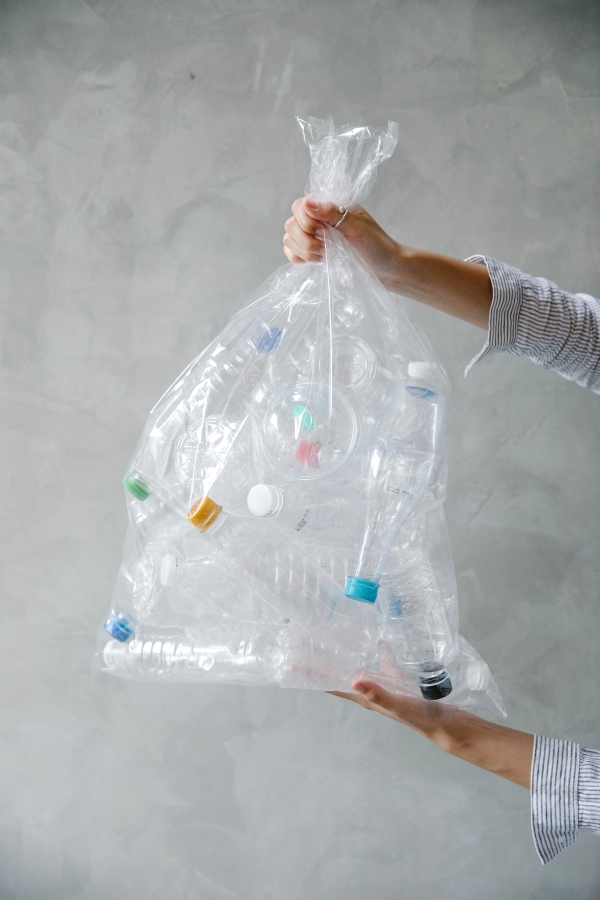Plastic is one of the key material segments within the polymers market. Plastic materials are produced from polyethylene. The plasticity of the plastic material allows it to be molded, extruded, or pressed into solid objects. Plastic is used in industries like Packaging, Transportation, Electronics as well as Textiles.
The use of additives for the fabrication of plastic materials makes it more durable and flexible in nature. These additives increase the product life cycle of the plastic material.
Since Plastic is mainly a petrochemical derivative, the market is majorly reliant on the crude oil segment. The increased carbon footprint owing to the burning of fossil fuels causes environmental degradation. The harmful effects of plastic on biodiversity are expected to be one of the key restraints for this market. The increased adoption of green technology and its impact on the growing global circular economy is expected to limit the use of plastics.
Plastic in the Packaging Industry:
The Packaging sector accounts for a major share of the value chain for the overall Plastics Market, Plastic containers for storage are used as a part of the supply chain and distributor network. Plastic material is used for storage as a part of the natural foods and condiments sector as well. The material is an integral part of the cold chain in terms of transportation. The Durability of plastic material is one of the key factors that drive the use of this compound within this sector.
Plastic containers for storage are predominantly comprised of polyethylene, ethylene, and polypropylene in their raw state. In a soft state, plastic material can be molded into various structures that are suitable for varied applications. Plastic injection molding is one of the key methods that are applied for the fabrication of solid molds. Plastic injection molding is the process of melting plastic pellets and injecting the same into a mold cavity while applying pressure. The plastic material fills the mold, solidifies, and hereafter produces the final product.
Plastic Injection molding can be used to create products like wire spools, some musical instruments (and parts of them), automotive parts and components, toys, packaging, bottle caps, one-piece chairs and small tables, storage containers, mechanical parts (including gears), pocket combs, and most other plastic substances. Plastic Injection molding is one of the most common methods used for the fabrication of solid products.
Plastic Materials used in the packaging industry serve various verticals like Pharmaceuticals, Consumer Products, FMCG segments, Food, and Beverages, etc.
Plastic materials like polystyrene and polypropylene are also used for the fabrication of plastic bottles. PET is used to develop PETE bottles that are used for the storage of carbonated drinks, water, and food products. Plastic materials like HDPE are used to make plastic bottles that are reusable and recyclable. The material has an efficient moisture barrier. LDPE as plastic material is used for the fabrication of plastic bags owing to its low density. While Polystyrene is used to contain dry products like vitamins, tablets, capsules, etc. Other applications for plastic bottles include the storage of consumer products like shampoo, dry shampoo, liquid soap, toiletries, cosmetics, and others.
Plastic bottles can be recycled adeptly via the resin code which is printed towards the bottom of the structure. The material code lays the guidelines to be followed while recycling plastic to avoid environmental degradation. The resin code for Polyethylene terephthalate (PET) is considered to be 1, While the resin codes for HDPE, LDPE, and Polystyrene are 2,4 and 6 respectively.
The 2 Rs-Reduce, Reuse and Recycle can be essentially applied to the plastics market. Plastic material does not degrade in the environment, Therefore, the packaging products and by-products generated from industrial processes are exceedingly hazardous. Processes like incineration and burning of plastic waste which is used in second and third-tier cities are expected to increase the carbon footprint. The growing environmental awareness is hereby expected to be one of the key limitations for the global plastics market.
Plastic Pollution
According to a recent survey conducted, it was revealed that maximum production for plastic took place in the last 15 years. Between the years 1950 to 2015, the production increased from 2.3 million tons to 448 million tons. The production is expected to double by the year 2050. Roughly 8 million tons of plastic are disposed into the ocean every year thus causing plastic pollution. The plastic material is consumed by the aquatic life leads to a consequent depletion in marine life.

